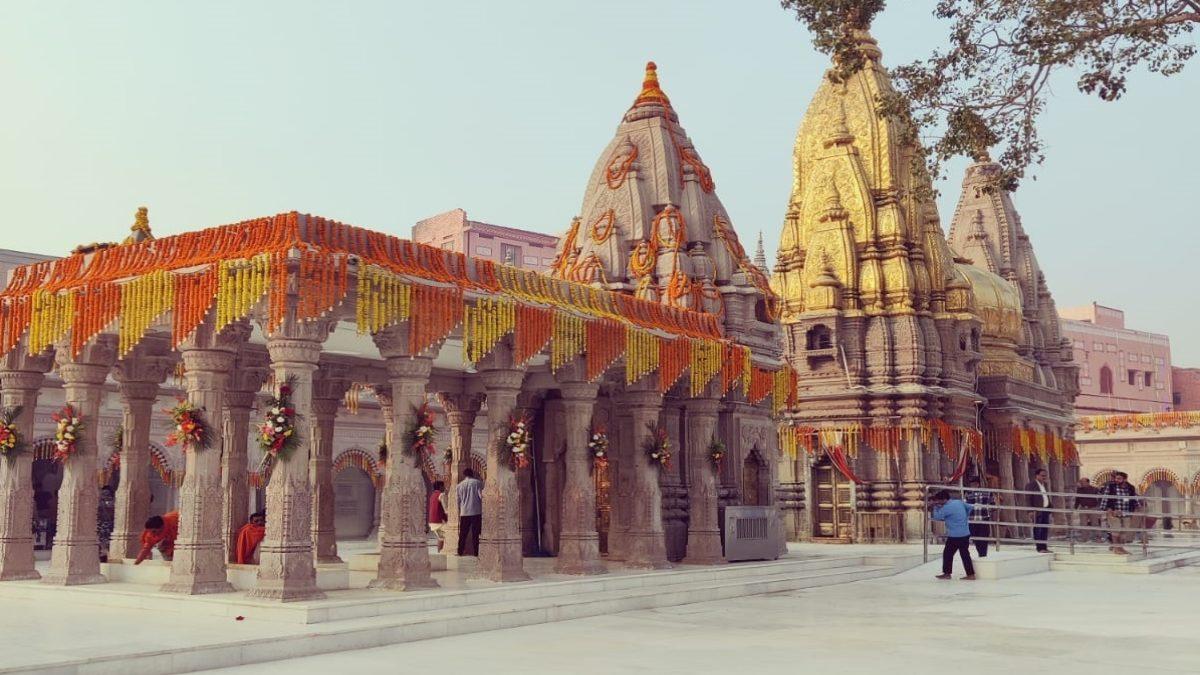Nestled in the ancient city of Varanasi, the Kashi Vishwanath Temple is not just a sacred site but a vibrant symbol of faith, culture, and spirituality. This temple, dedicated to Lord Shiva, holds a significant place in the hearts of millions of devotees and tourists who visit the holy city each year. With its rich history, exquisite architecture, and deep spiritual significance, the Kashi Vishwanath Temple in Varanasi offers a unique glimpse into the profound spiritual heritage of India.
Historical Significance
The Kashi Vishwanath Temple is one of the twelve Jyotirlingas, which are considered to be the most sacred shrines of Lord Shiva. The history of the temple dates back to ancient times, with references to Kashi (the ancient name for Varanasi) found in various Hindu scriptures, including the Rigveda. The temple has witnessed numerous reconstructions throughout its history, particularly due to invasions and destruction.
The original temple was said to have been built in the 11th century by King Harishchandra, and over the centuries, it faced significant challenges, including destruction by the Mughal ruler Aurangzeb in the 17th century. However, the resilience of the devotees led to the temple’s reconstruction, and in 1780, the present structure was commissioned by the Maratha king, Ahilya Bai Holkar. This rich historical narrative adds layers of meaning to the Kashi Vishwanath Temple in Varanasi, making it a focal point of pilgrimage for millions.
Architectural Marvel
The Kashi Vishwanath Temple is renowned for its stunning architecture that beautifully blends traditional Hindu design with intricate artistry. The temple complex is characterized by its golden spire, which shines brightly in the sunlight, symbolizing divinity and the spiritual ascent of devotees. The main sanctum houses the sacred Shiva Lingam, which is adorned with various offerings and is a focal point of worship.
The temple's walls are intricately carved, featuring elaborate designs and depictions of various Hindu deities, adding to its artistic allure. The entire complex is adorned with beautiful courtyards, shrines, and a host of other structures that provide an immersive experience for visitors. The Kashi Vishwanath Temple in Varanasi stands not just as a religious site but as a remarkable testament to the craftsmanship and devotion of ancient Indian artisans.
Spiritual Significance
For Hindus, Varanasi is considered the ultimate pilgrimage destination, and the Kashi Vishwanath Temple is at its spiritual core. It is believed that visiting this temple can lead to moksha (liberation from the cycle of birth and death), making it a vital part of a devotee's spiritual journey. The temple is a place where the earthly and the divine converge, offering a space for prayer, meditation, and reflection.
The rituals performed at the Kashi Vishwanath Temple are steeped in tradition. From the morning aarti (worship ceremony) to the evening rituals, the temple is abuzz with spiritual energy. Devotees come to offer their prayers, perform pujas (rituals), and seek the blessings of Lord Shiva. The atmosphere is charged with devotion, making each visit a profound spiritual experience.
The Ghats of Varanasi
The Kashi Vishwanath Temple is located near the banks of the Ganges River, which adds to its spiritual aura. The ghats of Varanasi, especially the Dashashwamedh Ghat, are an integral part of the temple experience. Many devotees combine their visit to the temple with a ritual bath in the Ganges, believed to purify the soul. The ghats are not just a place for rituals but also a vibrant hub of activity, filled with the sounds of prayer, the scent of incense, and the sight of life unfolding in its myriad forms.
Visitors can witness the mesmerizing Ganga Aarti, a nightly ceremony that honors the river and seeks blessings from the divine. The enchanting ambiance, coupled with the backdrop of the illuminated Kashi Vishwanath Temple, creates an unforgettable experience.
Visiting the Temple
Visiting the Kashi Vishwanath Temple in Varanasi is an experience filled with spiritual intensity and cultural richness. The temple attracts a large number of pilgrims and tourists, so it’s advisable to plan your visit accordingly. The best time to visit is during the early morning or late evening when the temple is less crowded and the rituals are in full swing.
Visitors are required to follow specific dress codes and guidelines when entering the temple premises. The security is strict, and bags are not allowed inside the temple complex. However, the efforts taken for security ensure a peaceful and focused environment for worship.
Conclusion
The Kashi Vishwanath Temple in Varanasi is much more than just a religious site; it is a manifestation of faith, history, and artistry. It stands as a beacon for those seeking spiritual solace and enlightenment. As you step into the temple, you not only traverse a path of faith but also a journey through the rich tapestry of Indian culture and tradition.
For anyone traveling to India, a visit to the Kashi Vishwanath Temple should be a non-negotiable part of your itinerary. This temple encapsulates the spirit of Varanasi and the deep-seated traditions of Hinduism, leaving every visitor with a sense of peace, reflection, and connection to the divine. Whether you are a pilgrim seeking blessings or a traveler exploring the wonders of India, the Kashi Vishwanath Temple offers a transformative experience that lingers in the heart and soul.





Comments